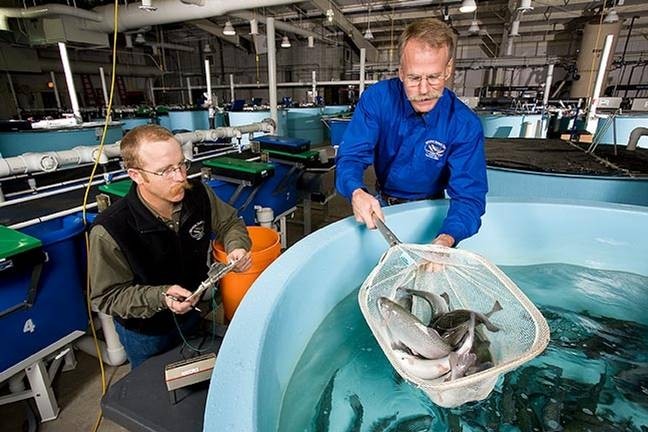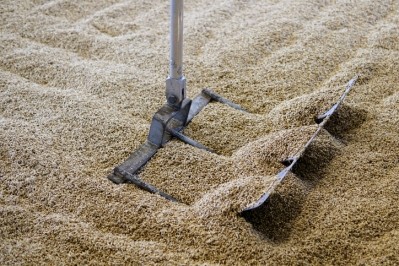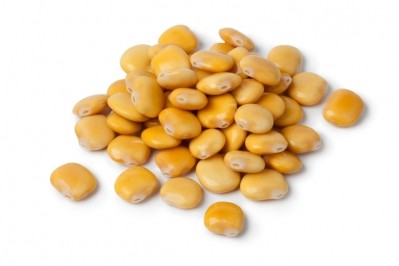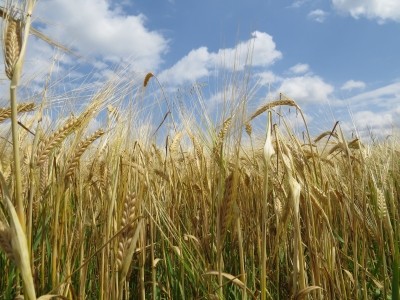Beer industry’s loss is aquafeed's gain

The need to develop more plant-based protein sources for aquafeeds is increasing because the availability of small ocean fish, used to make fishmeal and other feeds, remains constant while demand increases dramatically. The issue with many plant-based protein sources, however, is that they don’t contain enough available protein to meet the dietary requirements of fish.
Barley feed grain is no exception to this, falling far short of protein content it would need to qualify as an aquafeed ingredient.
“Barley feed grain typically contains about 10-12% protein, but an ingredient needs to contain 40-60% protein for carnivorous fish like rainbow trout,” said Rich Barrows, fish physiologist with the US Department of Agriculture’s Agricultural Research Service (ARS).
Patented process
The ARS, together with Montana Microbial Products (MMP) in Missoula, Montana, has developed a patented enzymatic process that concentrates the protein in barley by removing the carbohydrates and converting them into an ethanol co-product.
The result is an ingredient with a protein content in the range of 56-60% and protein availability (measured as digestibility) as high as 96%.
“The barley protein is not exposed to high temperatures during concentration, so digestibility is very high,” explained Barrows.
The beauty of this technology is that it uses barley that cannot be used by the brewing industry.
“The process uses feed grade barley that goes to animal feed, but more importantly it uses malting barley that does not make the specification needed for the beer industry. If barley is too high in protein (about 12-13%) it doesn’t have enough carbohydrate for beer, but is very good for making barley protein concentrate and ethanol,” explained Barrows.
Success with salmon and trout
Several trials have validated the barley protein’s suitability as a feed ingredient for rainbow trout and salmon.
Initially, scientists tested the barley protein concentrate in rainbow trout to determine its palatability and digestibility. Protein digestibility and palatability were found to be in the mid-90-percent range.
To evaluate the effects on growth in other fish, ARS scientists fed diets containing either 11 or 22% barley protein to Atlantic salmon during a four-month feeding trial. These fish were compared to salmon fed a standard commercial fishmeal diet. The researchers found no significant differences in growth between the three groups. However, fish fed the diet containing 22% barley protein concentrate had significantly higher energy retention, which meant they were using the feed more efficiently. These results were published in the Journal of Applied Aquaculture in December 2013 and have since been confirmed in a study conducted by researchers at the University of Sterling, which has been accepted for publication in Aquaculture Nutrition.
Commercialisation commences
The technology has been licensed to MMP and the company is now in the early stages of commercialising the process. A pilot plant has been built with the intention of producing about 50 tons of barley protein concentrate a month so full farm-scale trials can be conducted.
“Our laboratory trials are more sensitive than farm trials so I expect them to go well,” said Barrow.
Then a full scale plant with ten times the capacity would be built.
The potential global market for the ingredient could be huge in both volume and value terms, according to MMP’s Clifford Bradley.
He told FeedNavigator that aquaculture uses over 3.5 million tonnes of high quality protein feed ingredients per year, which equates to about $4 billion.
In terms of where barley protein could sit within that market, Bradley described it as “one of a more diverse suite of protein ingredients coming into the aquaculture and animal feed markets”.
“Barley protein has advantages over some other new protein ingredients with limited supply such as algae, peas etc. Barley as our feedstock is available in large quantities at economical cost in many regions of the world. A very modest share of the global protein market would make a successful business,” he said.
Its comparatively low price in comparison to, say fishmeal, would also help the development of a market for barley protein concentrate – MMP expects to sell at prices competitive with soy protein concentrates.












